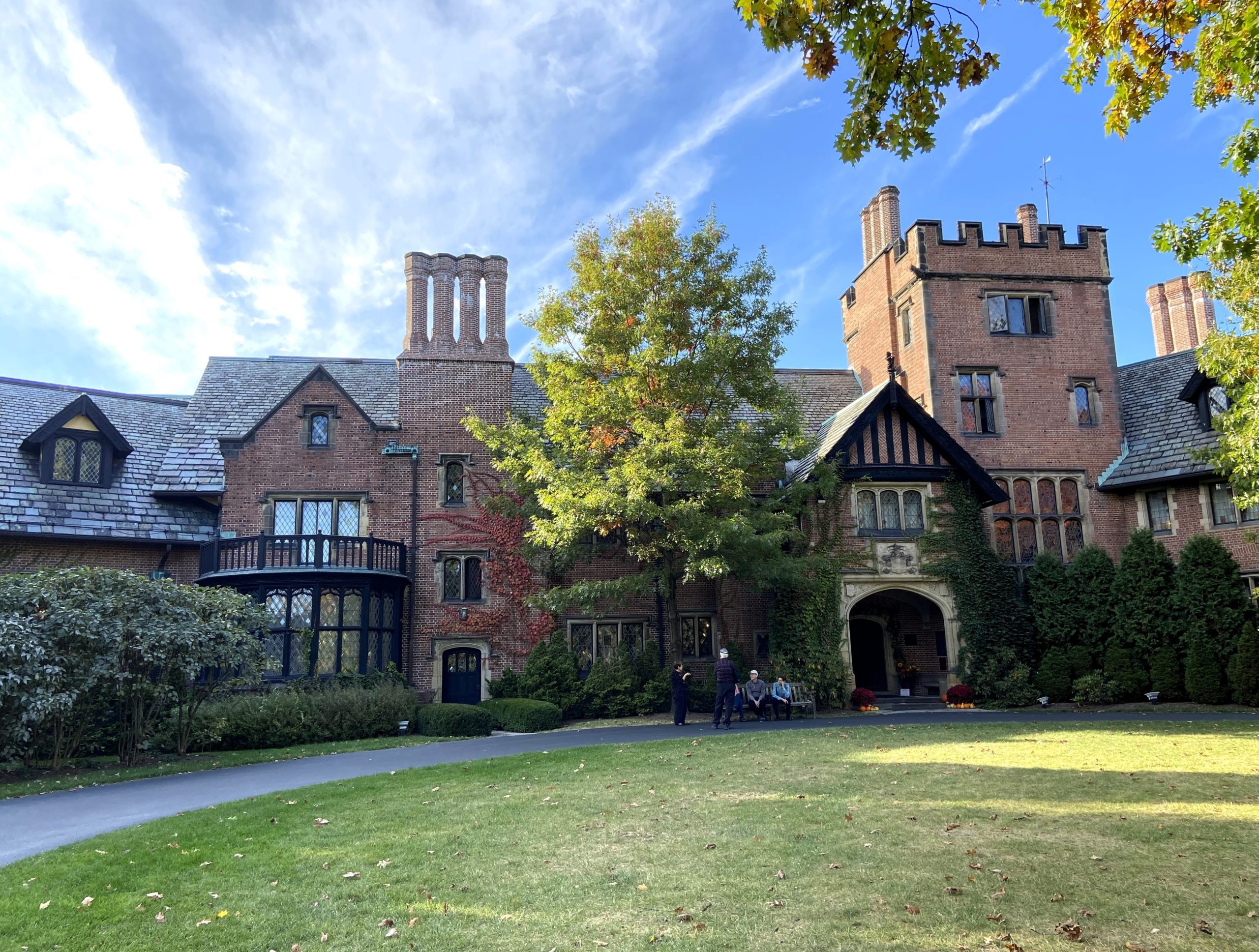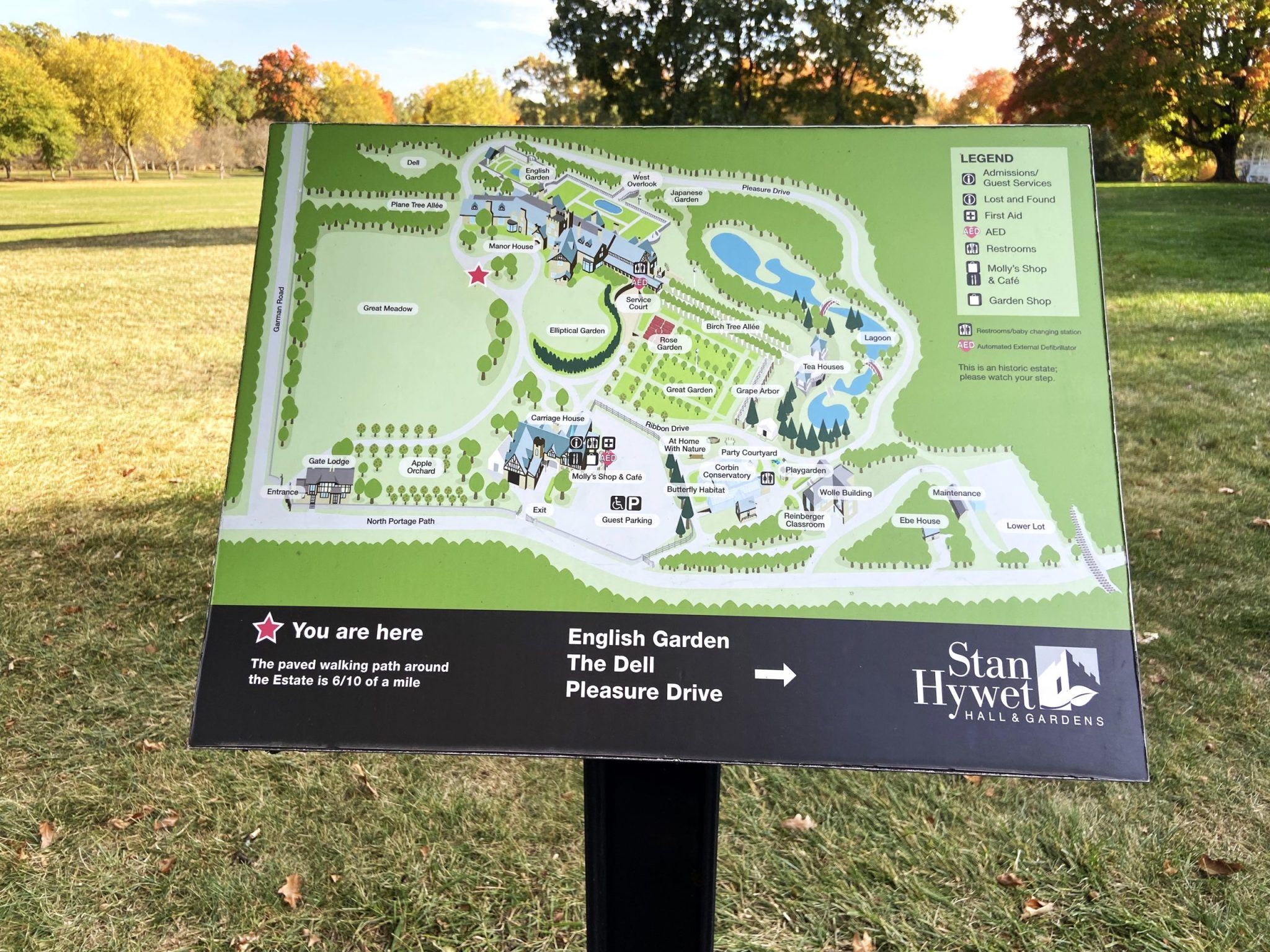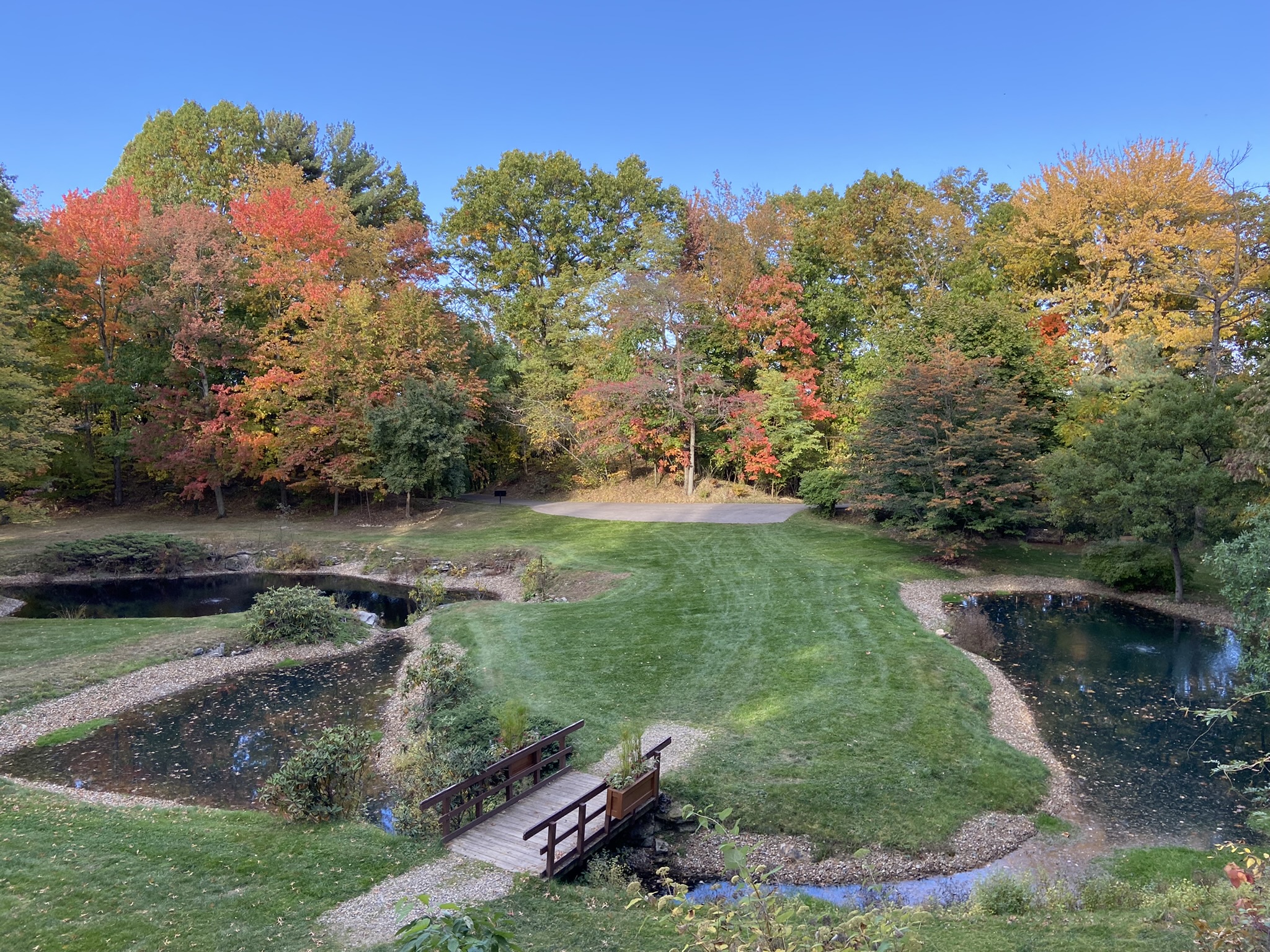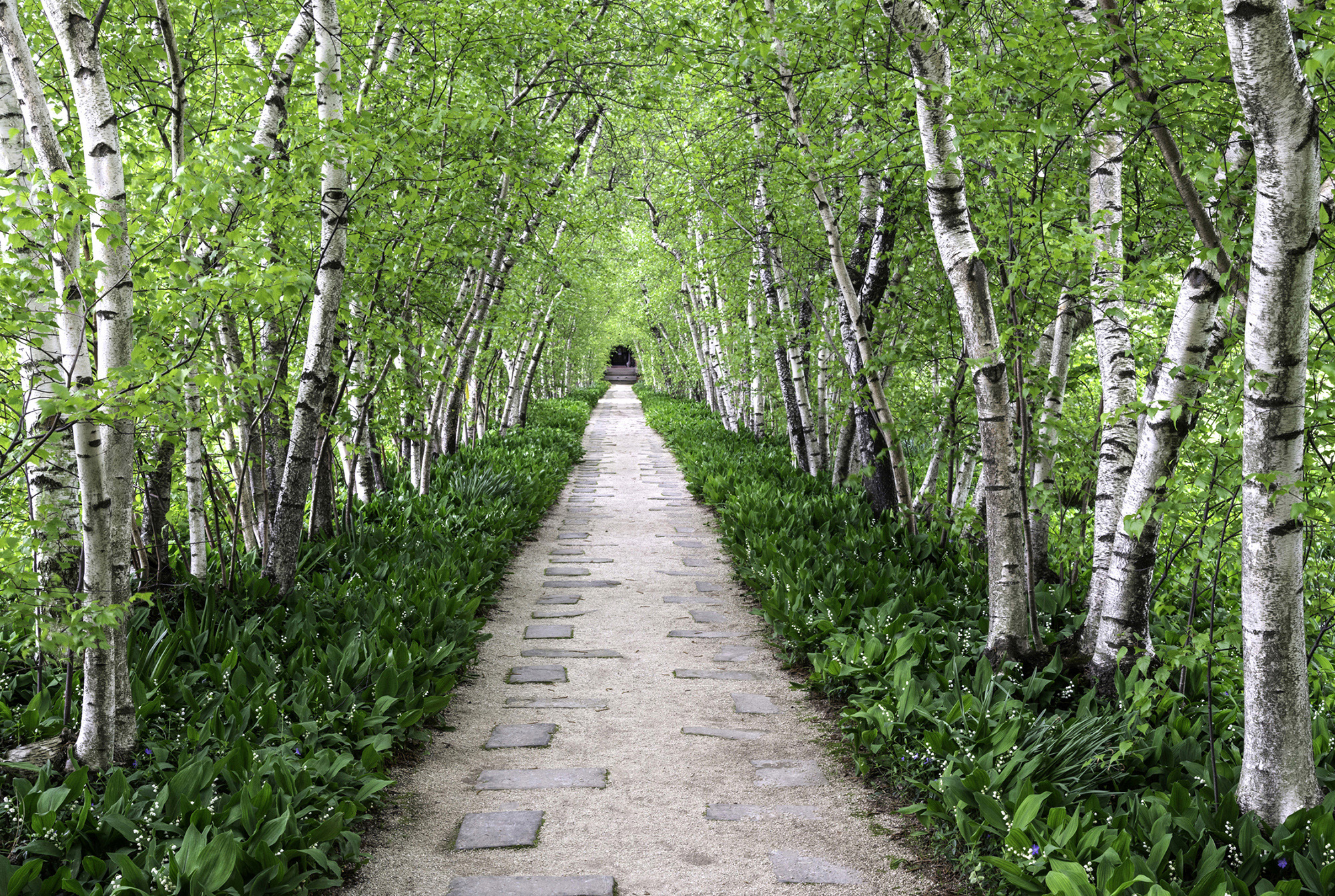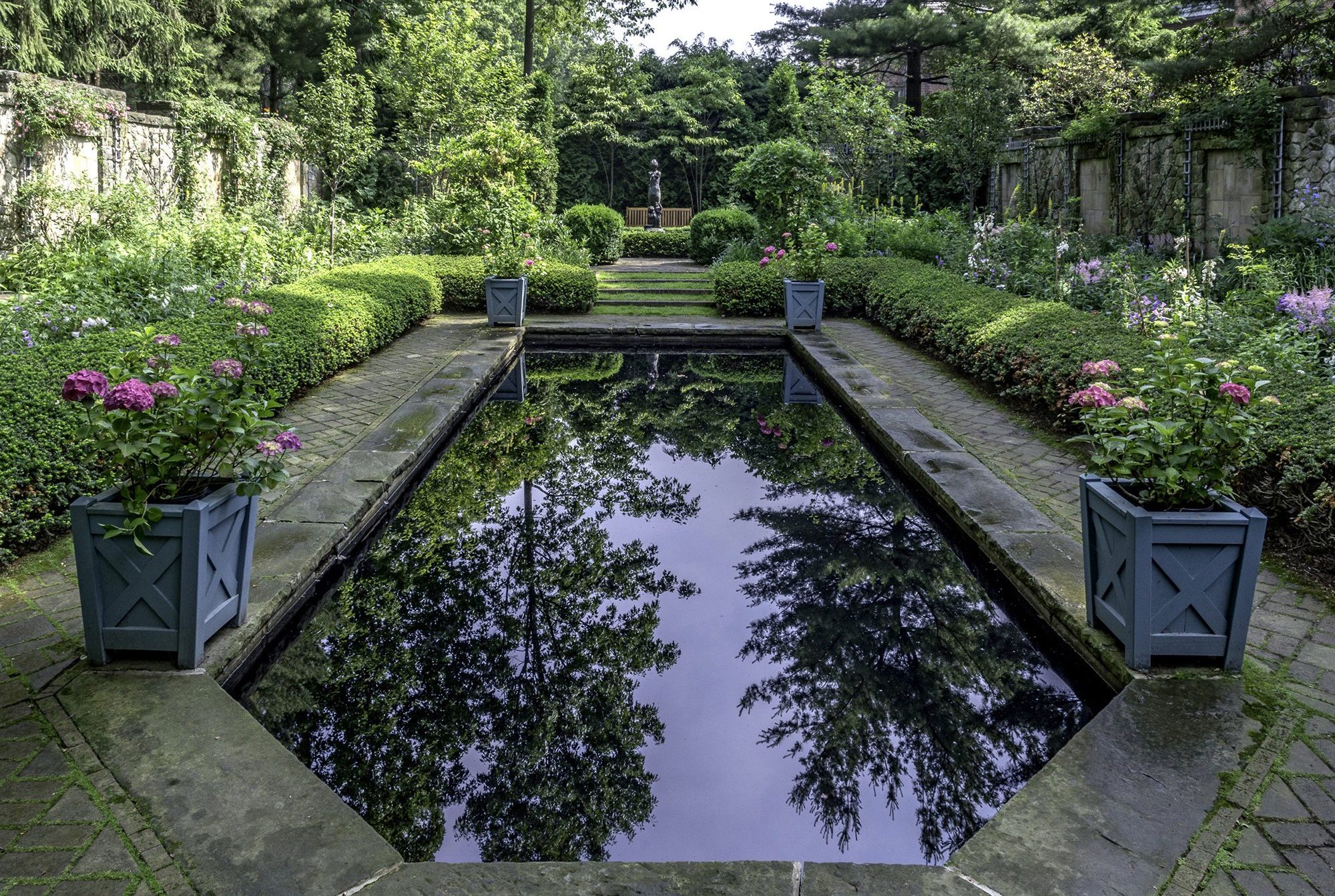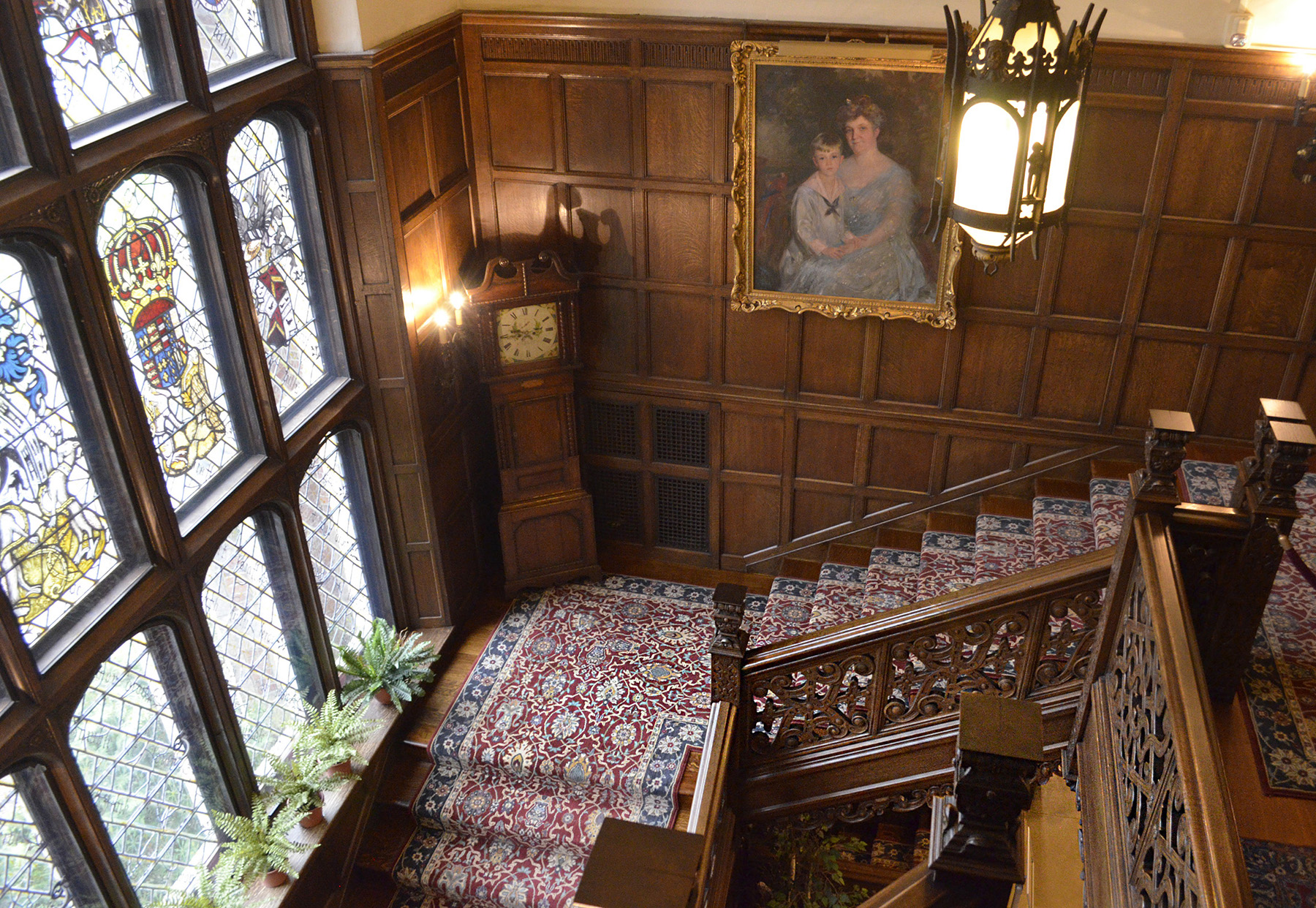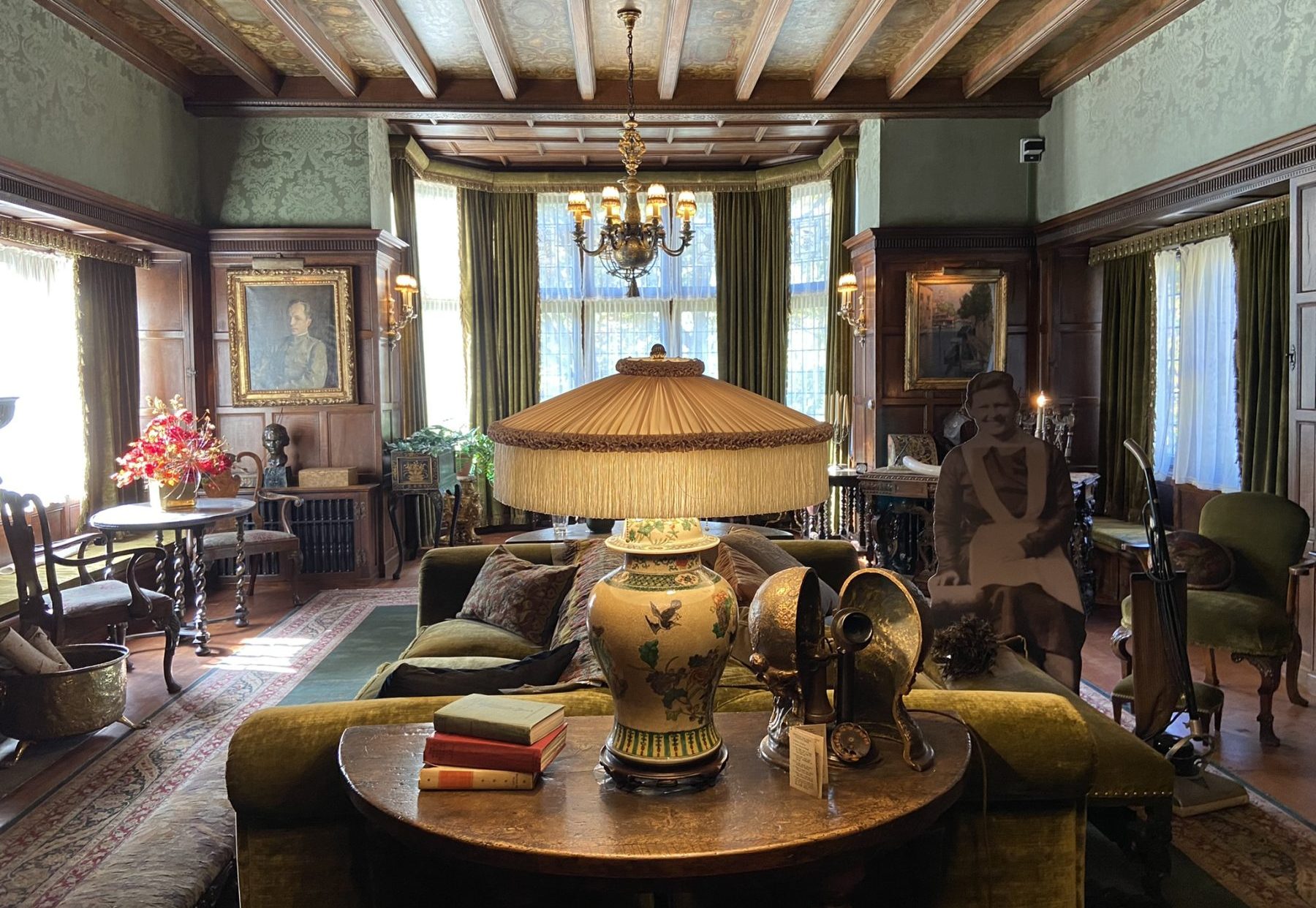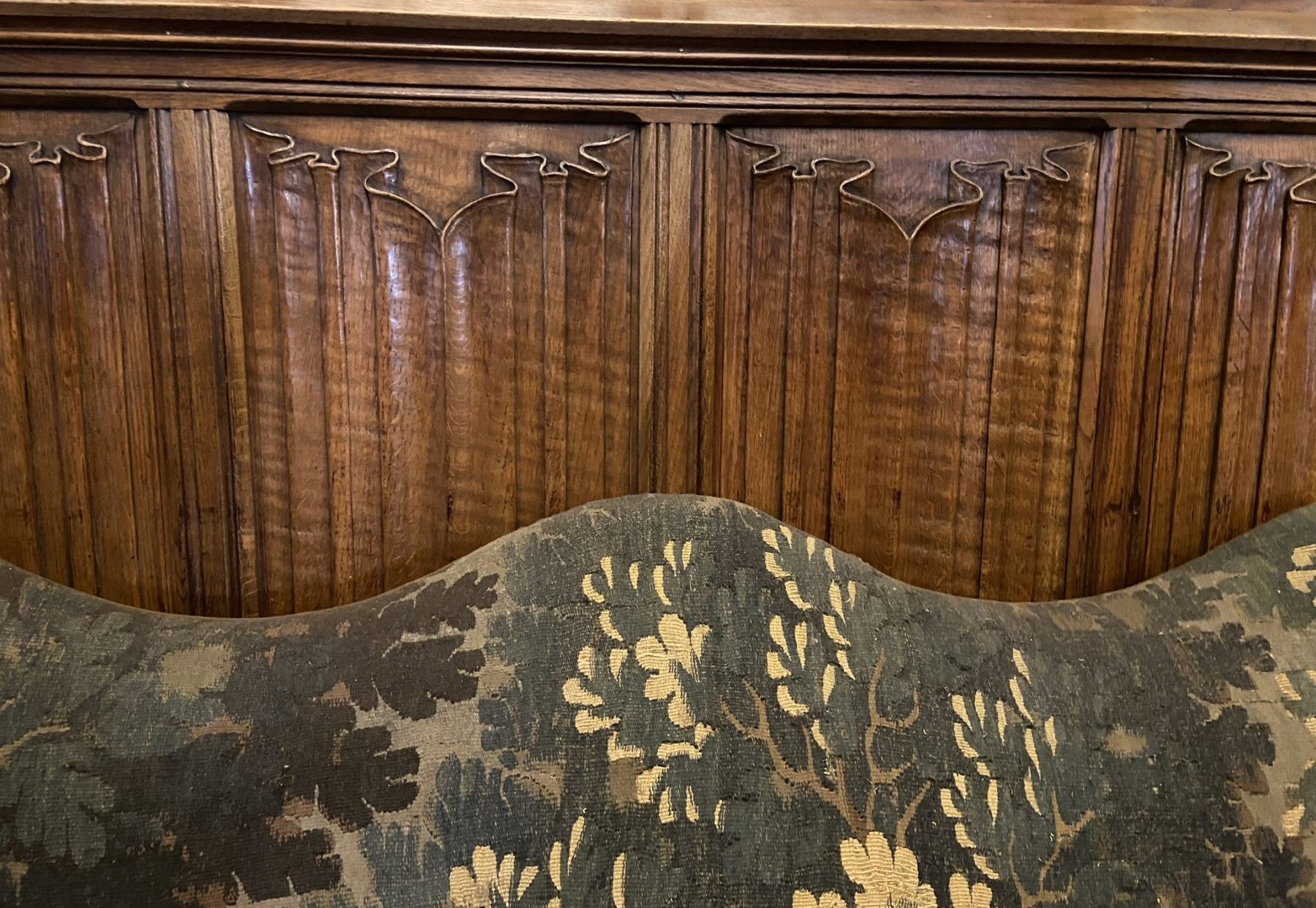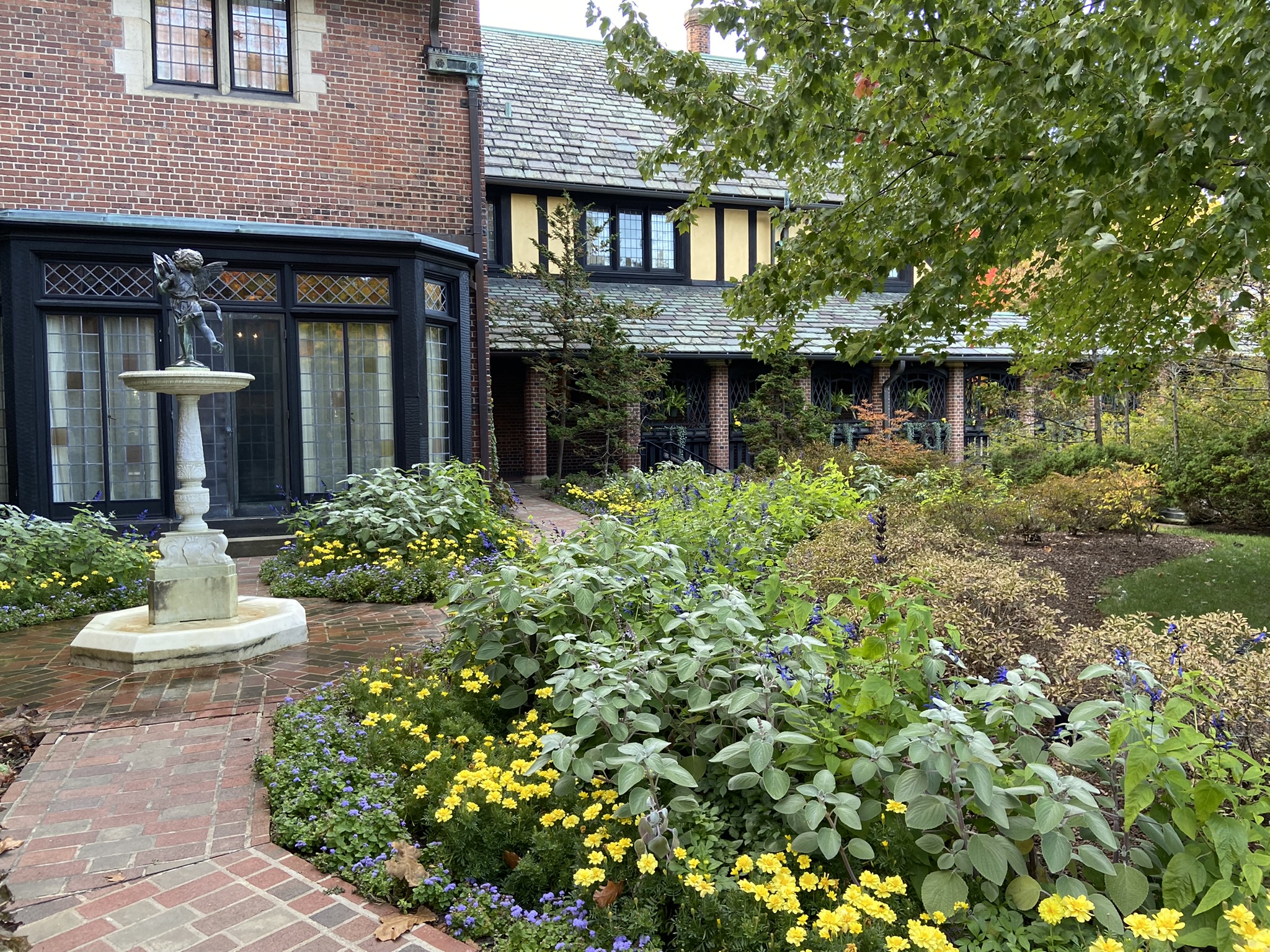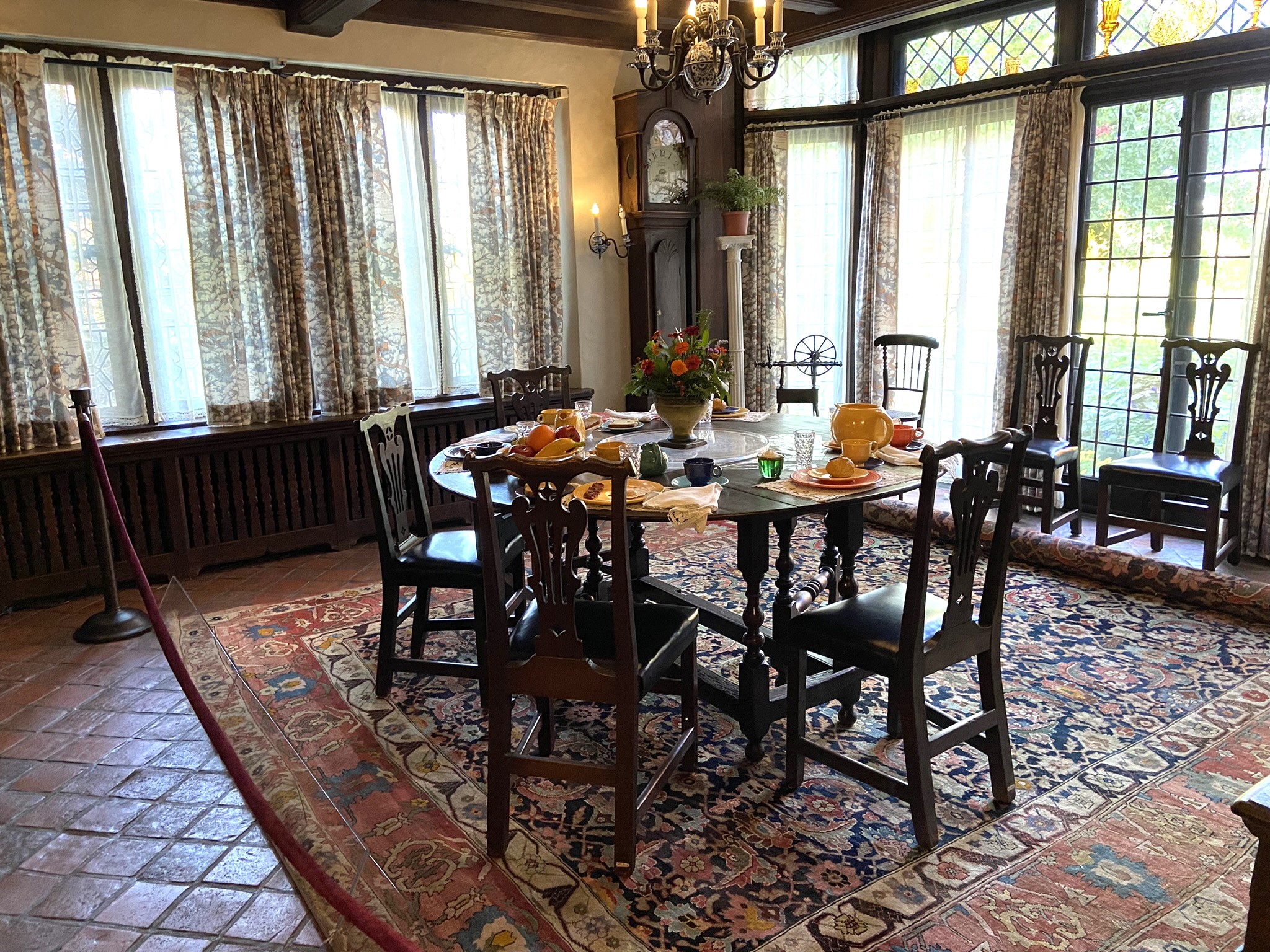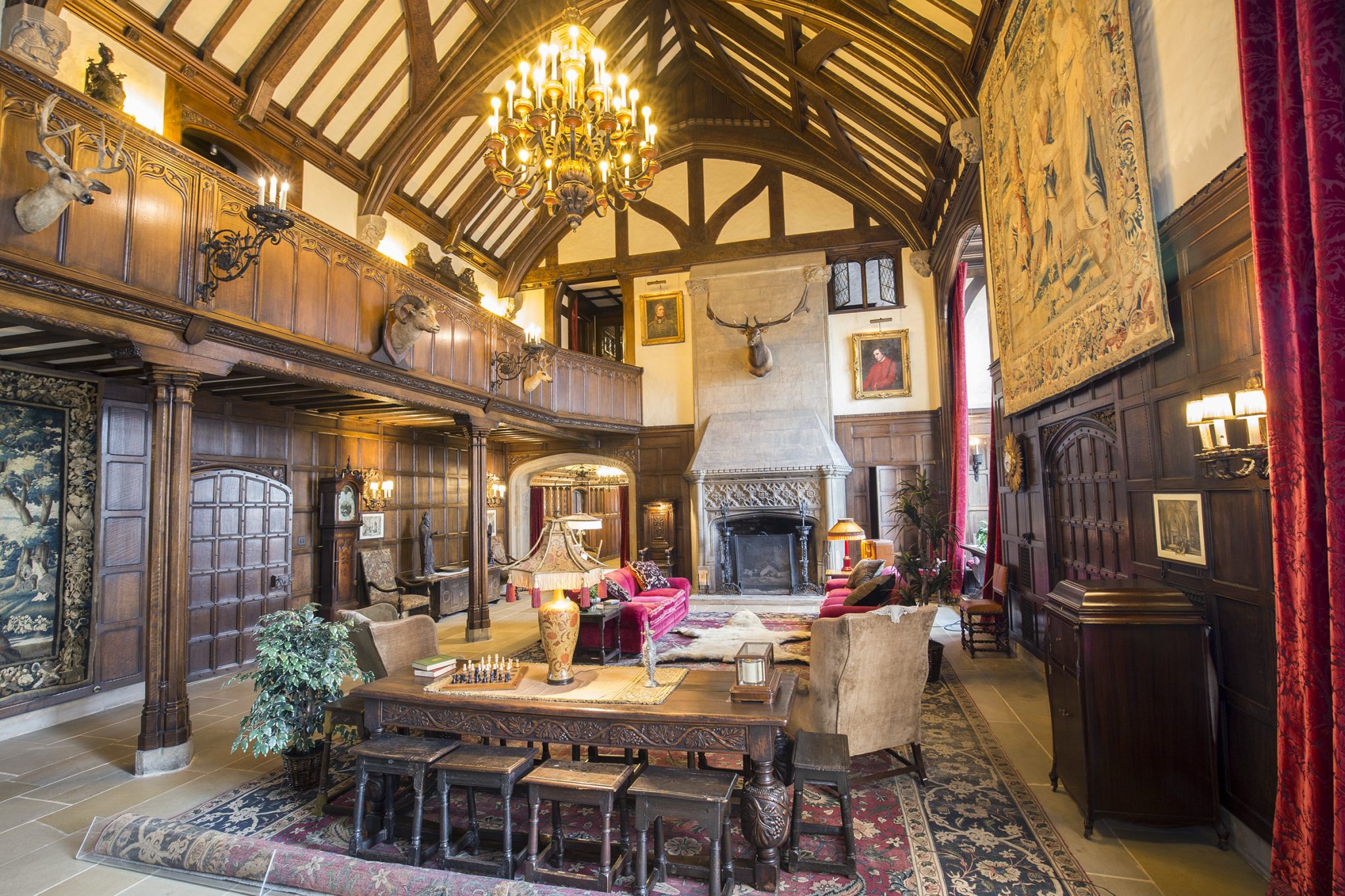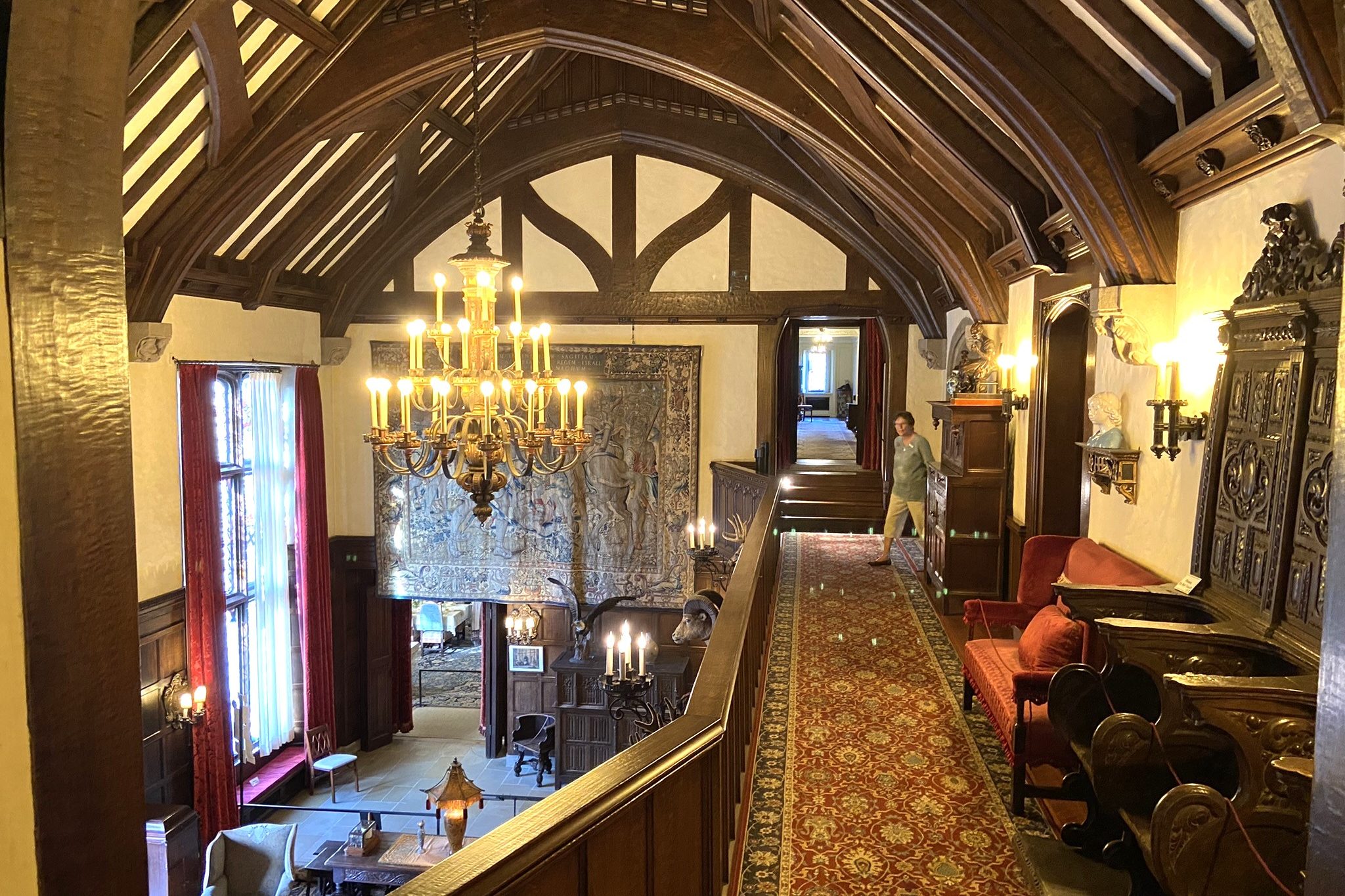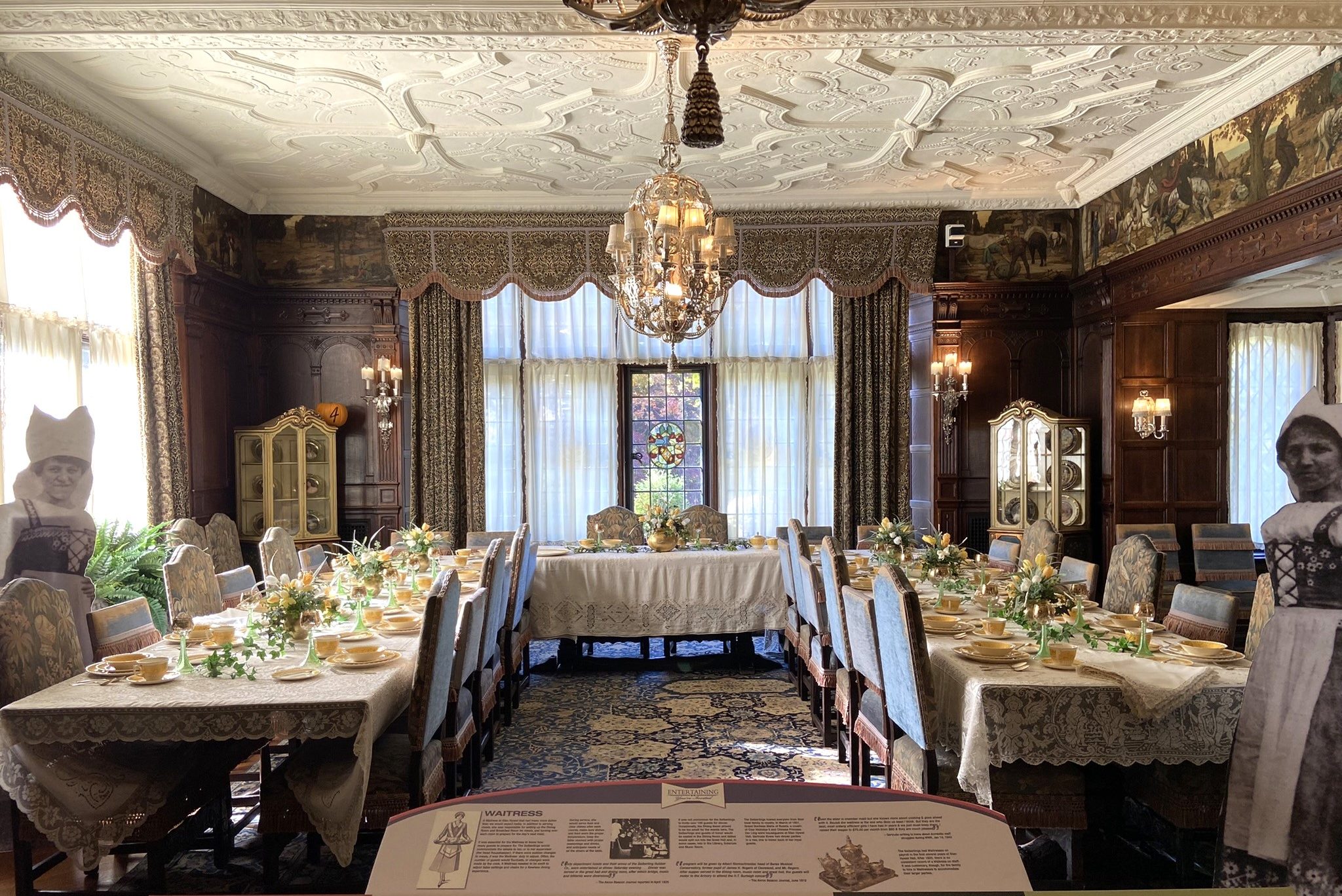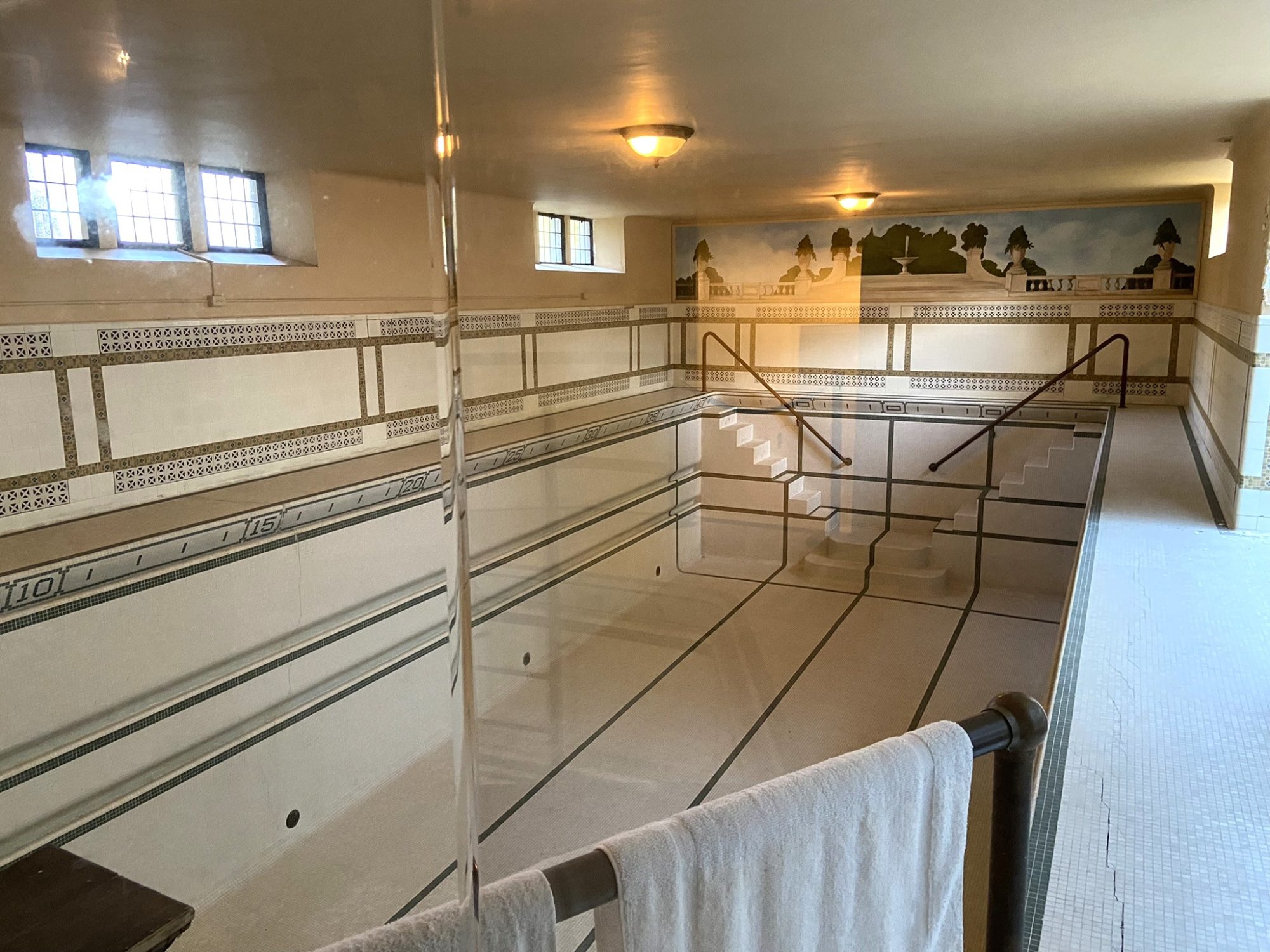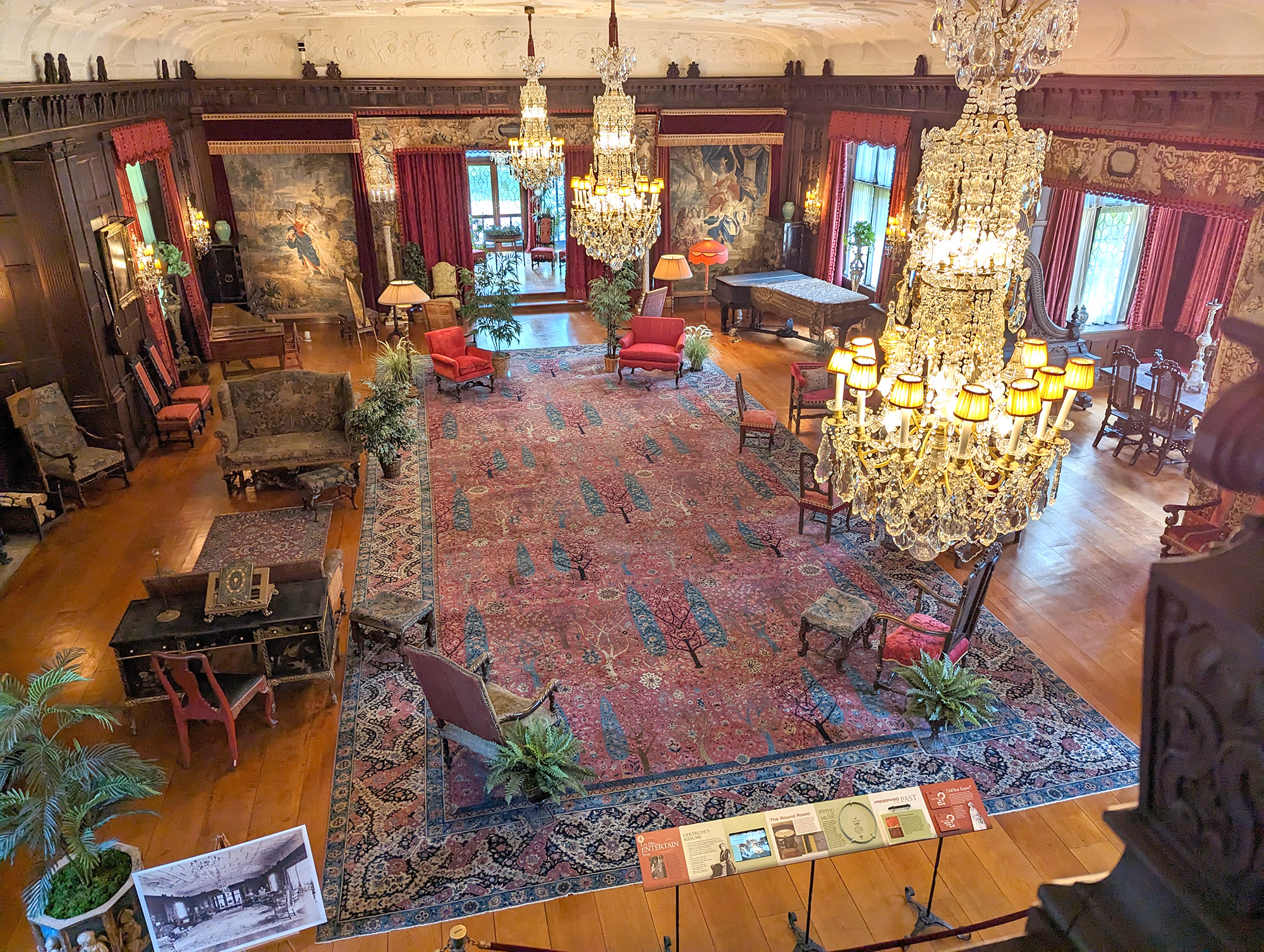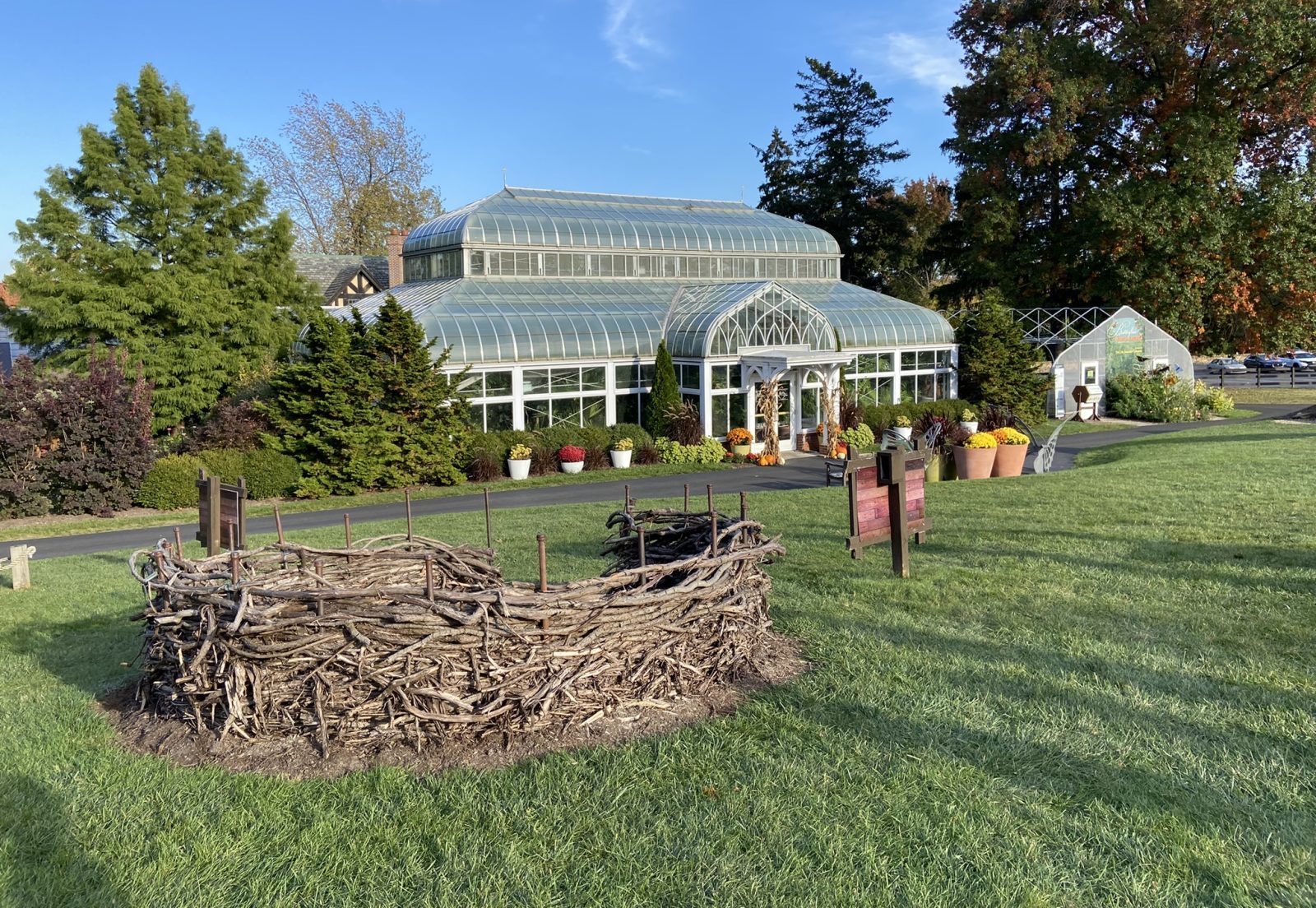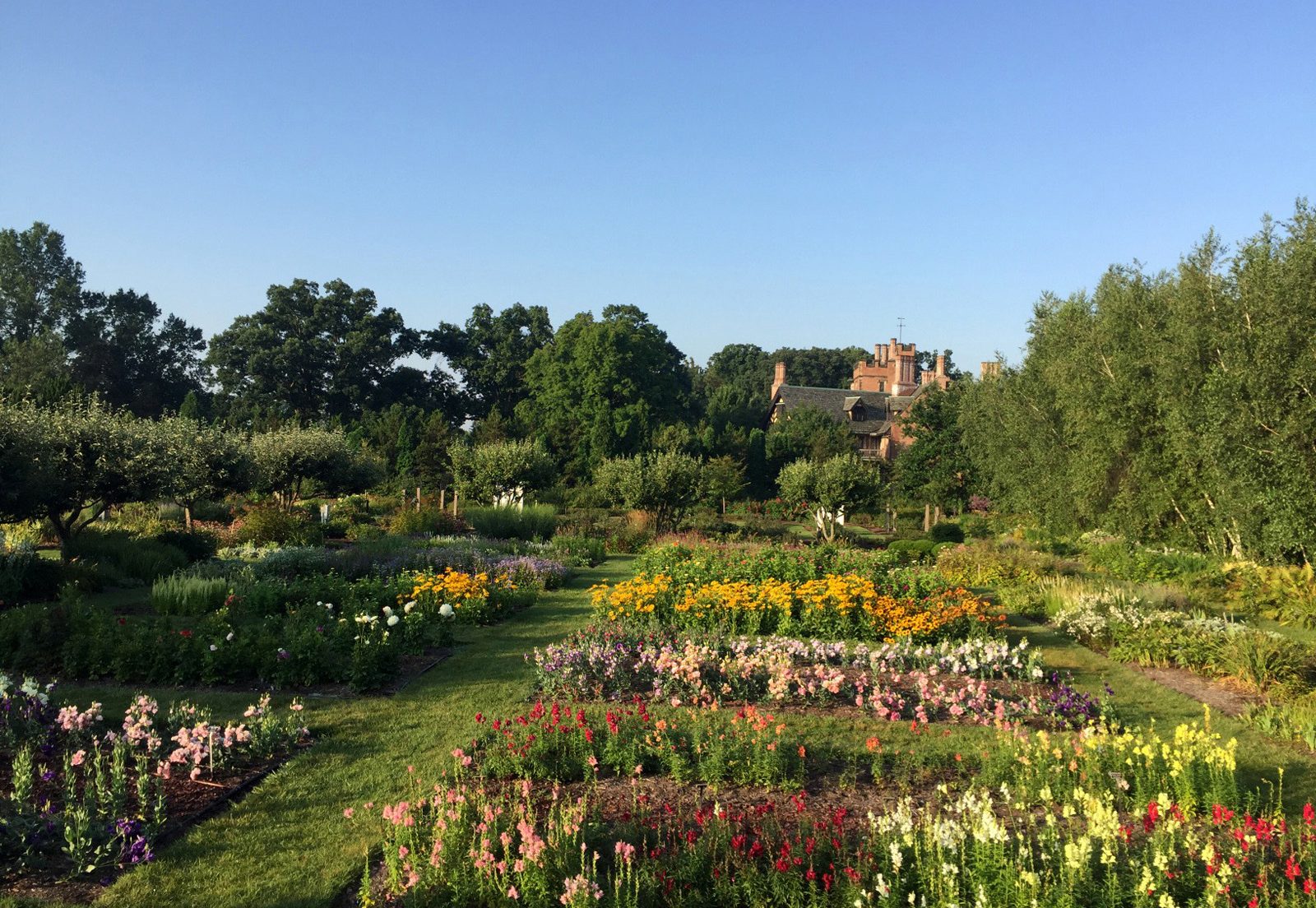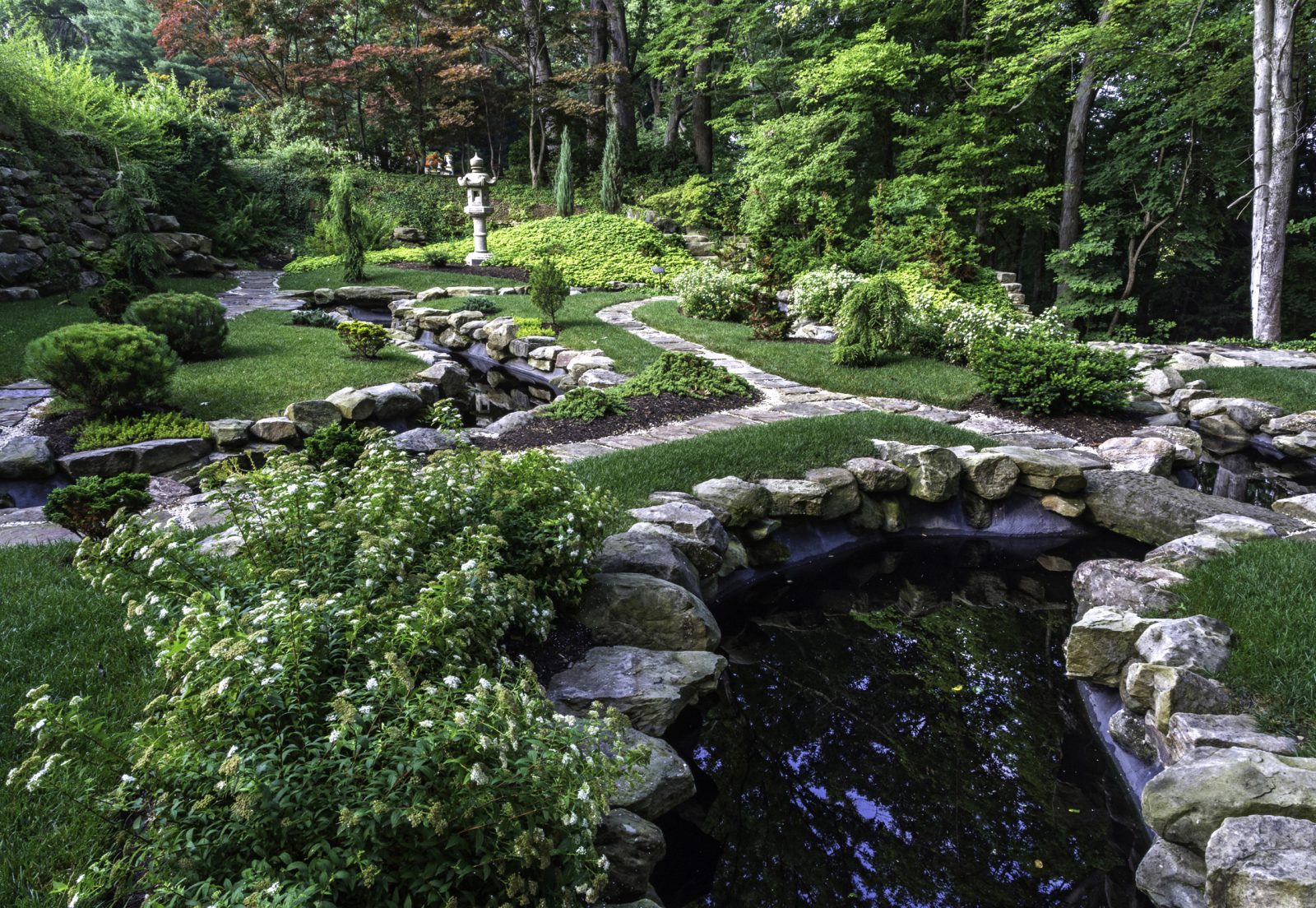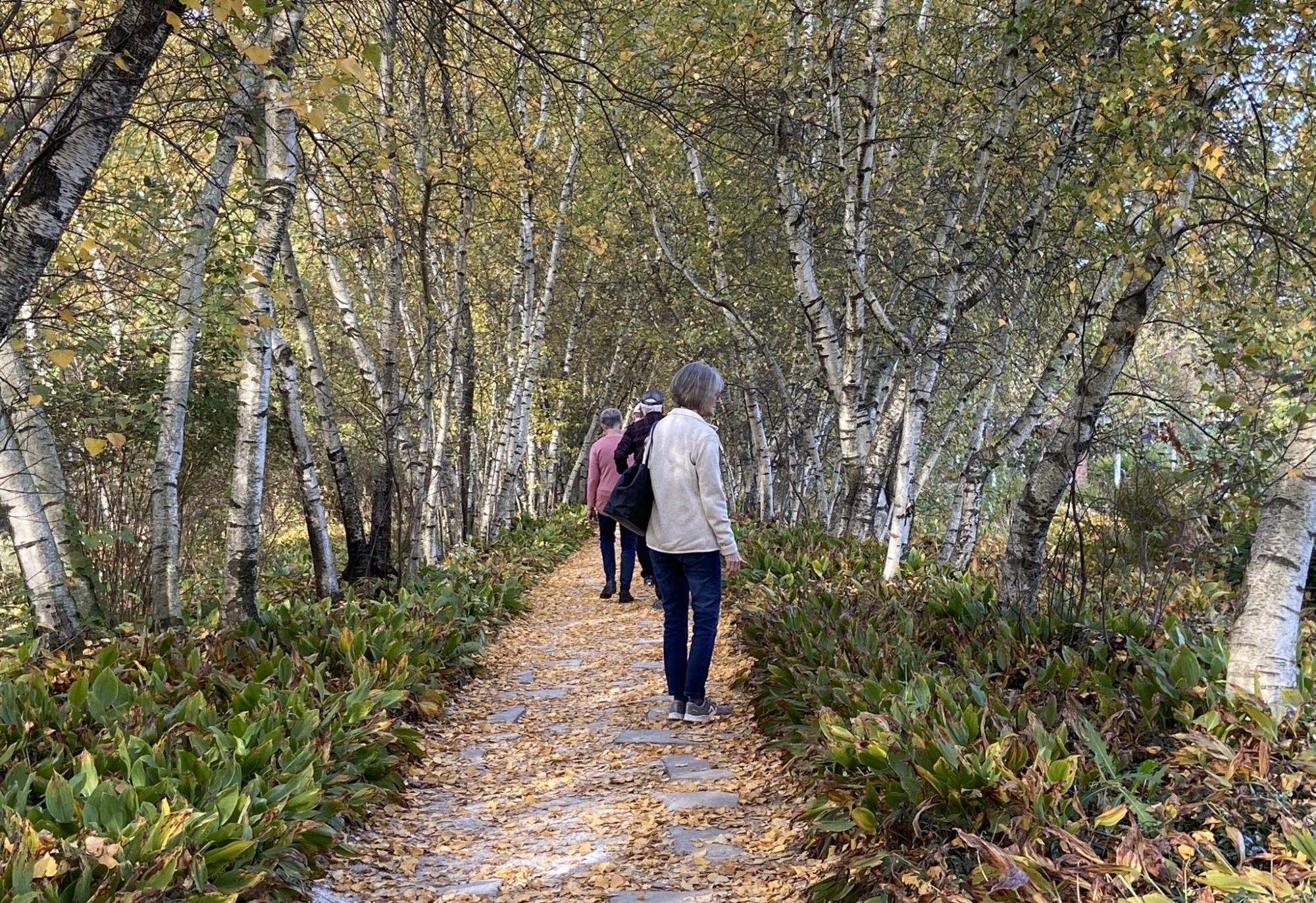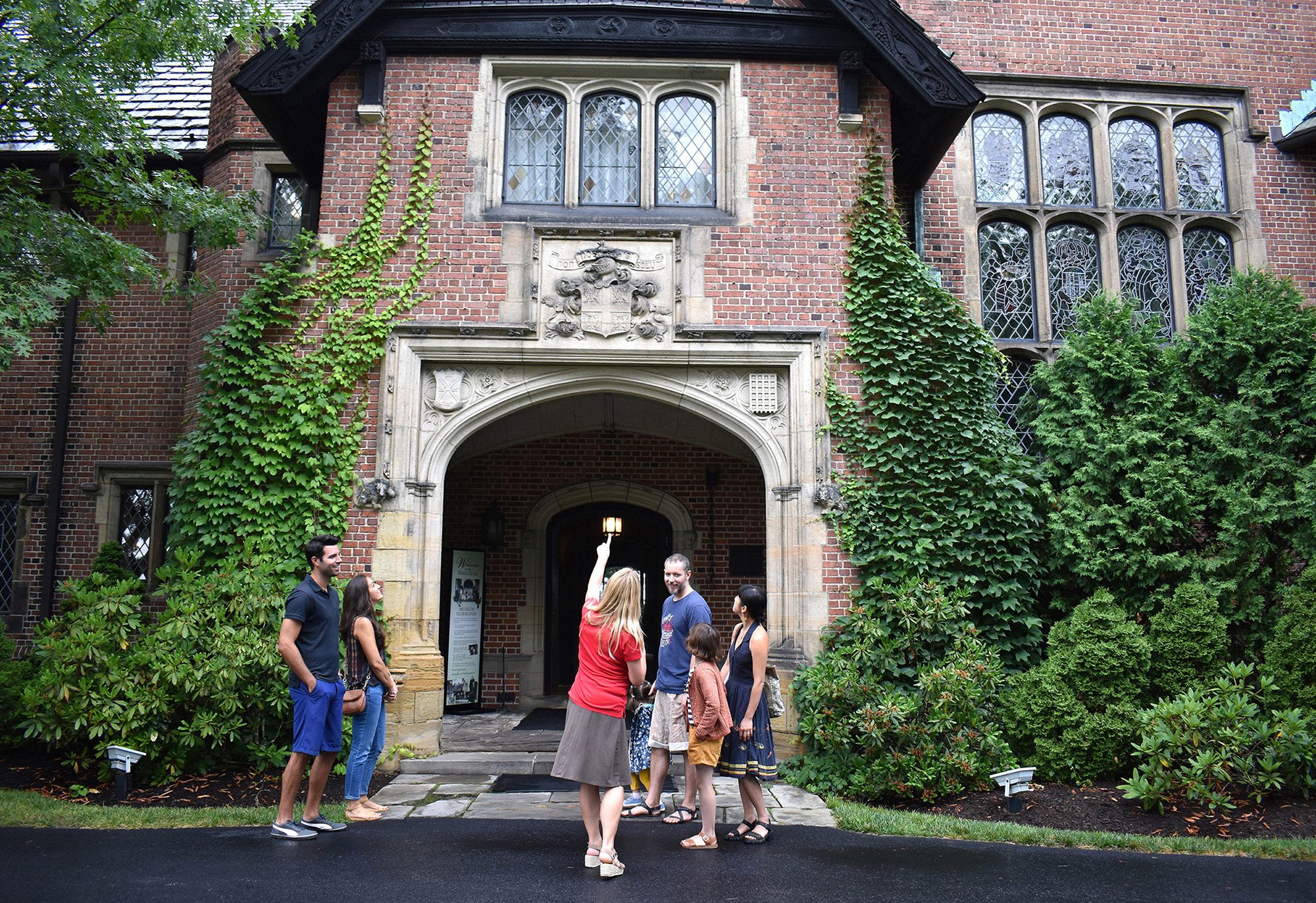Around the country, historic homes both famous and less well-known tell tales of families and places that shaped the past and still engage us. Northeast Ohio, with its industrial legacy, has a unique treasure. Stan Hywet Hall & Gardens in Akron, 40 minutes south of Cleveland, has transformed since the 1950s from the magnificent country estate of Frank (“F.A.”) Seiberling, co-founder of the Goodyear Tire & Rubber Company, to a nonprofit museum dedicated to sharing its history and historical landscape with the local and wider community, in accordance with the Seiberling motto Non Nobis Solum (Not for Us Alone). Tours, events, rentals, and educational programs for all ages are some ways Stan Hywet reaches an expanding and changing public. Some 700 volunteers help make this possible, supporting staff in areas from horticulture to special events.
Stan Hywet, open to the public from early April through December, will have an exciting year in 2024. The popular PBS series Antiques Roadshow, a U.S. staple since 1997, visited Stan Hywet in 2023, with appraisers and hopeful antiques owners filling its beautiful grounds. Three one-hour episodes, part of season 28, will air starting April 29 (check local PBS stations for schedule). In addition, this spring Stan Hywet is opening a new permanent exhibit, Blueprints to Bricks, on the Lower Level in the former photography darkroom of Willard Seiberling, son of F.A. and Gertrude. The exhibit uses the museum’s extensive collections, including letters and blueprints, to present the story of the house’s design and construction in a visually engaging way. It also shares information about Willard Seiberling’s photography.
Family Home to National Historic Landmark
Good timing and talent make a powerful combination: in 1898, F.A. Seiberling (1859–1955) and his brother C.W. Seiberling co-founded the Goodyear Tire and Rubber company, and, in 1921, the Seiberling Rubber Company. The rapid rise of the automobile and F.A.’s entrepreneurial and creative abilities (he had 19 patents during his time at Goodyear) brought him wealth, and Akron flourished too, doubling in population during the 1910s and becoming the center of tire and rubber production. From 1912 to 1915, F.A. and his wife, Gertrude Penfield Seiberling (1866–1946), worked with Cleveland architect Charles S. Schneider and Boston landscape architect Warren Manning to create a 64,500-square-foot Tudor Revival mansion and gardens for themselves and their six children on an estate that was 3,000 acres and is now 70 acres. Antiques and treasures from around the globe filled the bustling house. Named Stan Hywet (pronounced “stan HEE wit”) from the Old English for “stone quarry,” it made use, in part of an abandoned sandstone quarry on the grounds: very forward-thinking.
After F.A.’s death, the family decided to donate the mansion, which represented life in a different era, to a nonprofit organization, and in 1957 it opened to the public, dedicated to sharing Stan Hywet’s legacy and landscape. From its origins as a volunteer-led endeavor, Stan Hywet has become a professionally run museum accredited by the American Alliance of Museums and dedicated to historic preservation of the house and landscape. This has included an extensive restoration between 2015 and 2021. The sixth-largest house in the United States open to the public, it became a National Historic Landmark in 1981.
Volunteers, most from the Akron area, still play a vital role at Stan Hywet, with more than 700 participating in special events and public programs, tour services, and horticulture. More than 60% of new volunteers become involved through word of mouth; the majority are 60 or older, though in recent years younger people have become interested. The program is flexible, with no minimum hours required, and volunteers can also join specialized committees focused on areas such as fundraising, programming, and others, from flower arranging to the Ohio Mart artisan craft event. Emma Rainear, Volunteer Coordinator at Stan Hywet, notes, “Since Stan Hywet’s transition from a private family residence to a public nonprofit museum was entirely orchestrated by volunteers in the late 1950s and ‘60s, appreciation for volunteers runs very deep here because we would not be where we are today without them.”
Seeing the House and Gardens
Exploring a 70-acre example of an American Country Estate, including the 65-room Manor House and 10 restored historic gardens, takes time, and Stan Hywet offers different tours (or no tour) so visitors can focus on what they want to experience. A self-guided house tour, which includes the gardens, is perfect for those who prefer exploring at their own pace; visitors can also visit the gardens only. Guided Manor House tours provide a deeper dive into estate life and the house’s furnishings, a remarkable 95% of which are original. Engaging Nooks & Crannies Tours explore life for the 22- to 24-person domestic staff, and Garden History Tours look at landscape design.
Some of the most spectacular rooms are entertainment areas such as the large Great Hall, with its beamed ceiling, tapestries, wood paneling, and enormous Oriental rug, and the Music Room, with its piano and Aeolian organ. The Seiberlings hosted guests in the formal Dining Room; in contrast, the Breakfast Room is pleasantly intimate. The Plunge Pool, an indoor swimming pool, fascinates visitors. By the numbers, the Manor House is impressive (18 bedrooms, 25 bathrooms, 23 fireplaces), but it’s the well-preserved details that stand out: intricate plaster decorations, leaded and stained glass, and tile work; and woodwork in oak, chestnut, black walnut, and other woods.
The Seiberlings paid as much attention to the views and eclectic gardens surrounding the Manor House as they did to their home’s furnishings. Research and restoration over the decades have recaptured much of their charm. The canopy of the Birch Tree Allée extends 500 feet from the house and ends with a pair of teahouses and a lagoon view; the serene Japanese garden was a collaborative design by Warren Manning and T.R. Otsuka. In 1928, Ellen Biddle Shipman redesigned the walled English Garden, with its shade-loving perennials; this was one of Gertrude Seiberling’s favorite spaces. Today the Great Garden, designed in part as a cutting garden, still supplies fresh flowers for the house. The Lagoon area with its pools makes creative use of an abandoned quarry; the Seiberlings used it for recreation. In 2014, Stan Hywet added a 5,000-square-foot Playgarden, a multi-generational, handicapped-accessible interactive space.
Also on the grounds are the Corbin Conservatory, a replica of the original, and the Gate Lodge, home to a fascinating piece of history. Here, in 1935, Henrietta Seiberling connected Dr. Bob Smith and Bill Wilson, two alcoholics, for their first meeting; the two went on to found Alcoholics Anonymous.
Special Events & Community Activities
Public events throughout the season include popular favorites from car shows to the Christmas season Deck the Hall, with tours of a decorated Manor House and 1.2 million holiday lights (it drew 41,600 visitors in 2022). October’s four-day Ohio Mart presents artisan crafts from more than 120 artists and crafters and is also a fundraiser for Stan Hywet. On Sundays, Woof Walks allow dog owners to bring their leashed pets for a garden walk.
Stan Hywet’s educational mission encompasses all ages. Formal programs with Akron Public Schools align with Ohio education standards, and Stan Hywet partners with key regional organizations such as Cuyahoga Valley National Park and the Ohio and Erie Canalway. Family programs for specific age groups, such as Seiberling Explorers, allow younger children to enjoy Stan Hywet. Workshops and programs for adults feature activities such as photography, gardening, and yoga. Overall, the goal is to create accessible programs so that the community can engage with Stan Hywet Hall & Gardens in meaningful and experiential ways.
Linda Cabasin is a travel editor and writer who covered the globe at Fodor’s before taking up the freelance life. She explored Stan Hywet Hall & Gardens while visiting family near Cleveland. She’s a contributing editor at Fathom. Follow Linda on Instagram at @lcabasin.
Featured Photo: Front view of the Manor House. Photo by Mike Squires

